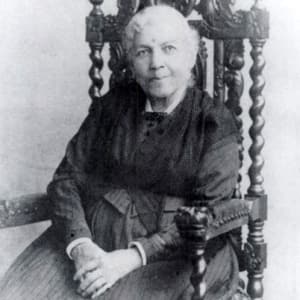
Edith New
Edith New was a British suffragette in the early 20th century who was jailed several times for committing acts of vandalism in her efforts to promote women’s right to vote.
Synopsis
Edith New, born March 17, 1877, in Swindon, England, into a working class family and by age 14 went to work as a teacher. In 1903 she was inspired by a suffragist speech calling for women’s equal rights and soon joined the Women’s Social and Political Union (WSPU). New engaged in several acts of vandalism and property destruction, which earned her harsh prison time. British women were eventually granted the right to vote in 1928, and New went back to teaching. She died on January 2, 1951, at age 73.
Early Life
Edith Bessie New was born on March 17, 1877 (some accounts place her birth in June), in Swindon, England, the daughter of Isabella and Frederick New. Edith’s father, a railroad employee, was killed in a yard accident when she was barely a year old. By age 14, she was working as a teacher at Queenstown Infant’s School to help the family financially. She eventually moved to London to teach.
Historical Background
During this time, the women’s suffrage movement in Britain was making some inroads, but only at the local level. In 1897, the National Union of Women’s Suffrage Societies (NUWSS) was formed to advance women’s voting rights throughout the empire. Their efforts created a lot of attention, but no change in the law. Frustrated, the Women’s Social and Political Union (WSPU) was formed with the rallying cry “Deeds, Not Words.” The slogan would prove to be more than mere hyperbole.
Becoming a Soldier for the Cause
In 1903, after attending a women’s rights meeting and hearing Emmeline Pankhurst speak, Edith New quit her teaching job and joined the WSPU. Initially, the organization confined its activities to holding rallies and publicly accosting members of Parliament to pressure them to enfranchise women. But when it became apparent that the government had no intention of changing the law, the WSPU shifted strategy and for the next decade wreaked havoc on a complacent Edwardian Britain.
The Militancy Escalates
From 1906 until the start of World War I, Edith New and members of WSPU engaged in acts of vandalism designed to draw attention to their cause. In 1908, New and fellow militant Olivia Smith chained themselves to a railing at 10 Downing Street (the prime minister’s residence.) A few months later, New and others broke several windows there and did the same again later at Westminster. Soon the Daily Mail was referring to the women as “suffragettes” as opposed to the less combative suffragists of the NUWSS.
As the women’s belligerency continued, so did their punishment with ever-increasing penalties. First offenses usually brought two weeks in jail, but soon the judgments increased into months. Because their crime was primarily petty vandalism, and most likely because of their sex, they were treated with disrespect and abuse in jail. The WSPU demanded the women be classified as political prisoners, qualifying them for more lenient treatment—including not being held in a prison—but the courts refused their plea. In protest, Edith New and others went on a hunger strike and were subjected to force-feeding by prison guards.
The media switched its attention from the women’s misconduct on the streets to their mistreatment in prison. In response to the public outrage, Parliament passed the “Prisoners’ Temporary Discharge for Ill Health” act in 1913—commonly called the “cat and mouse” act. Under the law, women in prison, weakened by hunger and force-feeding, were temporarily released to recover, and then rearrested to serve out their sentences.
The War Effort and Then the Vote
With the start of World War I, the WSPU called a halt to the combativeness and turned its attention to the war effort. After the war, the British government granted women limited voting rights, and by 1928 all women over the age of 21 were granted the right to vote. Many attributed the WSPU‘s pugnacity to the movement’s success. Others claimed that only a small faction of suffragettes engaged in violent acts and that those actions actually hurt the movement.
Later Years
Even before enfranchisement was granted, Edith New left the movement and returned to teaching. However, she continued to campaign for women’s rights and equal pay and eventually retired to Cornwall, England. On January 2, 1951, she died at age 73. New, Pankhurst and other women involved in the movement were the inspiration for the 2015 film Suffragette.




